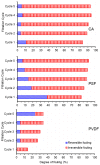Cigarette Butt Waste as Material for Phase Inverted Membrane Fabrication Used for Oil/Water Emulsion Separation
- PMID: 34201192
- PMCID: PMC8226596
- DOI: 10.3390/polym13121907
Cigarette Butt Waste as Material for Phase Inverted Membrane Fabrication Used for Oil/Water Emulsion Separation
Abstract
The increasing rate of oil and gas production has contributed to a release of oil/water emulsion or mixtures to the environment, becoming a pressing issue. At the same time, pollution of the toxic cigarette butt has also become a growing concern. This study explored utilization of cigarette butt waste as a source of cellulose acetate-based (CA) polymer to develop a phase inverted membrane for treatment of oil/water emulsion and compare it with commercial polyvinylidene difluoride (PVDF) and polysulfone (PSF). Results show that the CA-based membrane from waste cigarette butt offers an eco-friendly material without compromising the separation efficiency, with a pore size range suitable for oil/water emulsion filtration with the rejection of >94.0%. The CA membrane poses good structural property similar to the established PVDF and PSF membranes with equally asymmetric morphology. It also poses hydrophilicity properties with a contact angle of 74.5°, lower than both PVDF and PSF membranes. The pore size of CA demonstrates that the CA is within the microfiltration range with a mean flow pore size of 0.17 µm. The developed CA membrane shows a promising oil/water emulsion permeability of 180 L m-2 h-1 bar-1 after five filtration cycles. However, it still suffers a high degree of irreversible fouling (>90.0%), suggesting potential future improvements in terms of membrane fouling management. Overall, this study demonstrates a sustainable approach to addressing oil/water emulsion pollution treated CA membrane from cigarette butt waste.
Keywords: cellulose acetate; cigarette waste; crossflow filtration; membrane fabrication; oily wastewater; phase inversion.
Conflict of interest statement
The authors declare no conflict of interest.
Figures










References
-
- Hamzah Y., Umar L. Preparation of creating active carbon from cigarette filter waste using microwave-induced KOH activation. J. Phys. Conf. Ser. 2017;853:012027. doi: 10.1088/1742-6596/853/1/012027. - DOI
LinkOut - more resources
Full Text Sources

